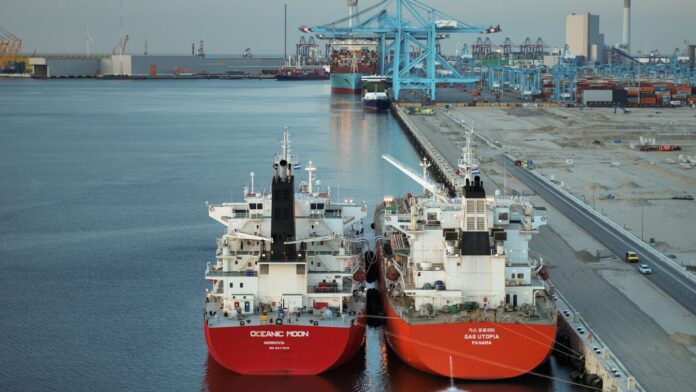Trammo, OCI and James Fisher Fendercare successfully conducted an ammonia bunkering pilot between two vessels at a terminal in the port of Rotterdam on 12 April 2025.
This marks an important step in preparing the Dutch port for vessels bunkering clean ammonia, which is a carbon-free fuel, so no CO2 is released during combustion. The first ships capable of using ammonia as a bunker fuel are expected in 2026 or 2027.
The pilot involved transferring 800 cubic meters of liquid, cold ammonia at -33 degrees Celsius between two ships. This took about 2.5 hours and was conducted alongside a new quay at the Maasvlakte 2 APM terminal. The demonstration validated the port of Rotterdam safety framework for ammonia bunkering, establishing that it is possible to do this safely and without ammonia release in the port.
Various parties collaborated on the pilot, facilitated by the Port of Rotterdam Authority. OCI, owner and operator of the port’s ammonia terminal, partnered with Trammo, which supplied the two tankers carrying OCI’s ammonia. James Fisher Fendercare provided equipment and expertise to ensure the safe execution of the ship-to-ship transfer at the berth location provided by APM Terminal. Bunker barge operator Victrol shared its bunkering expertise during the preparation of the pilot. The DCMR Environmental Protection Agency, Rijnmond Safety Region (VRR), and the Joint Fire Service (GB) were involved to ensure the pilot was conducted safely and smoothly.
The port of Rotterdam uses the international Port Readiness Level assessment tool to prepare for all new marine fuels. To properly prepare the port to receive and bunker ships using new fuels, various steps will be taken to ensure that all regulatory, safety, infrastructural and supply factors are in order. The major European port has already fully implemented this method for LNG and, to a large degree, for methanol. For ammonia, the pilot concludes level 6 and raises the port’s readiness to level 7, with all safety procedures ready to allow bunkering on a project basis. With this enhanced readiness, the port of Rotterdam is ensuring that it is prepared for bunkering of the first ammonia-fuelled ships. The learnings of the pilot and the established procedures will be disseminated to the EU, other ports and relevant parties.







